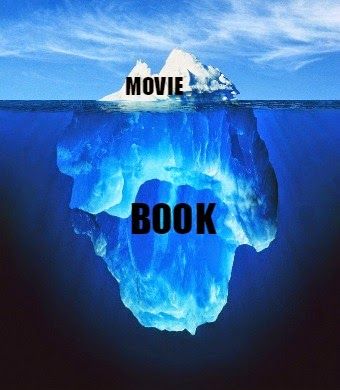Hello, fellow Streaming Generation! We’re going to delve into a topic that merges the worlds of literature and cinema, two fantastical realms. Have you ever wondered how your favorite novels might suddenly materialize into movies that you can watch? This blog will examine the intriguing process of adapting literary works into motion pictures. Prepare yourself for a stimulating discussion about the art of adaptation, the difficulties it presents, and the pleasure it offers to audiences all around the world.
1. The Magic of Adaptation
Comparable to translating a tale from one language to another is turning a book into a movie. Each media has distinct advantages and disadvantages of its own. Movies thrive in visual narrative, showcasing spectacular images and potent performances, while books allow us to delve deeply into characters’ thoughts and emotions. For a Streaming Gen, this transformation is like witnessing the same story told through different dialects, each with its unique charm and appeal.
2. Finding the Right Balance
Finding the ideal balance between being faithful to the original material and making the adjustments required for the cinematic medium is crucial when adapting a book to a film. Filmmakers must choose what to include, what to leave out, and how to best convey the story’s main points.
3. The Challenge of Length
Dealing with the length disparity is one of the major difficulties in adapting novels. While movies have a restricted runtime, books frequently have more time and room to thoroughly explore subplots and characters. Making difficult judgments about what to keep and what to cut might result from this.
4. Casting the Characters
One of the most important parts of the adaptation process is picking the ideal performers to bring favorite book characters to life. Casting directors are under additional strain since fans frequently have strong ideas about who should play their favorite characters.
5. The Importance of Visuals
Movies have a special benefit in that they can make a story’s imagery come to life. Filmmakers utilize visual effects to take viewers to fantasy realms, from the majesty of “The Lord of the Rings” to the mystical animals in “Harry Potter.”
6. The Role of Screenplay
In order to convert a written work into a script that can be filmed, screenwriters are essential. When adapting the novel for the film, they must maintain the dialogue, tone, and pace of the original.
7. Challenges and Controversies
Dedicated book enthusiasts might occasionally criticize and stir up debate about adaptations. In order to avoid controversy, filmmakers must carefully handle changes to the plot or characters.
8. Successful Examples
Over the years, there have been several successful book-to-movie adaptations. “The Shawshank Redemption,” “The Godfather,” and “The Great Gatsby” are just a few examples of films that successfully convey the spirit of their original works while also including a distinctive cinematic element.
9. Evolving Technology
Technology developments have created new opportunities for literary adaptations. Modern filmmaking skills have improved the adaptation game, from the elaborate world-building in “Game of Thrones” to the breathtaking cinematography in “The Hunger Games.”
10. The Joy of Discovery
In the end, book pictures provide both readers and moviegoers an opportunity to experience a tale in a novel and engaging way. They may share great novels with new audiences and offer a fresh viewpoint to devoted readers.
In the end, turning a book into a movie is a challenging and imaginative process. Maintaining the narrative’s core while embracing the special qualities of the cinematic medium needs a delicate balance. So the next time you watch a book adaptation on the big screen, take a moment to reflect on the process that converted those written words into a stunning work of art.


